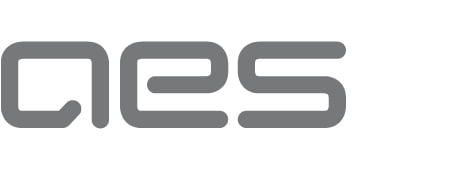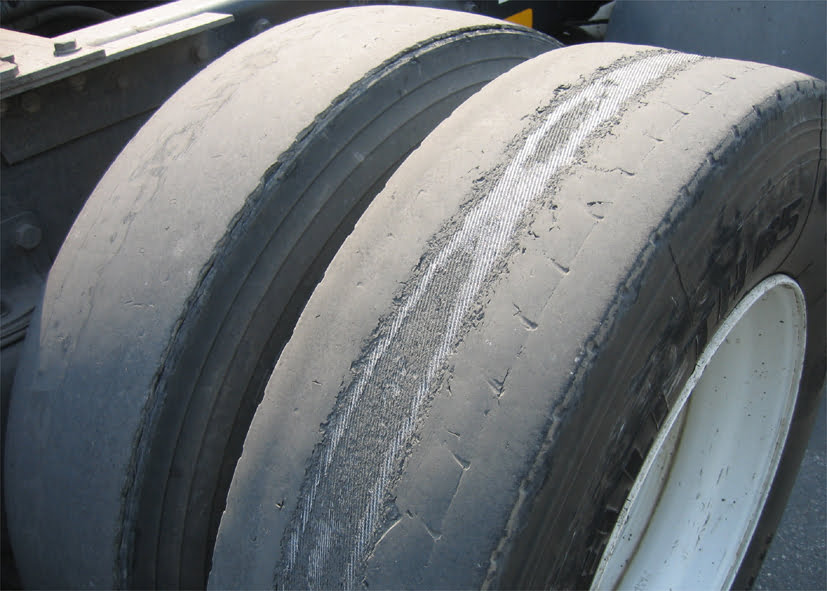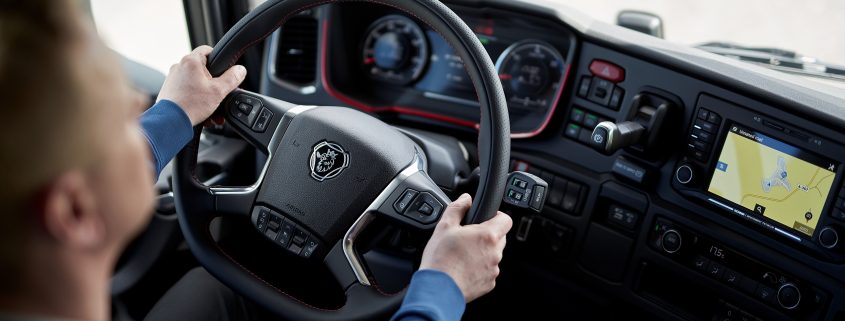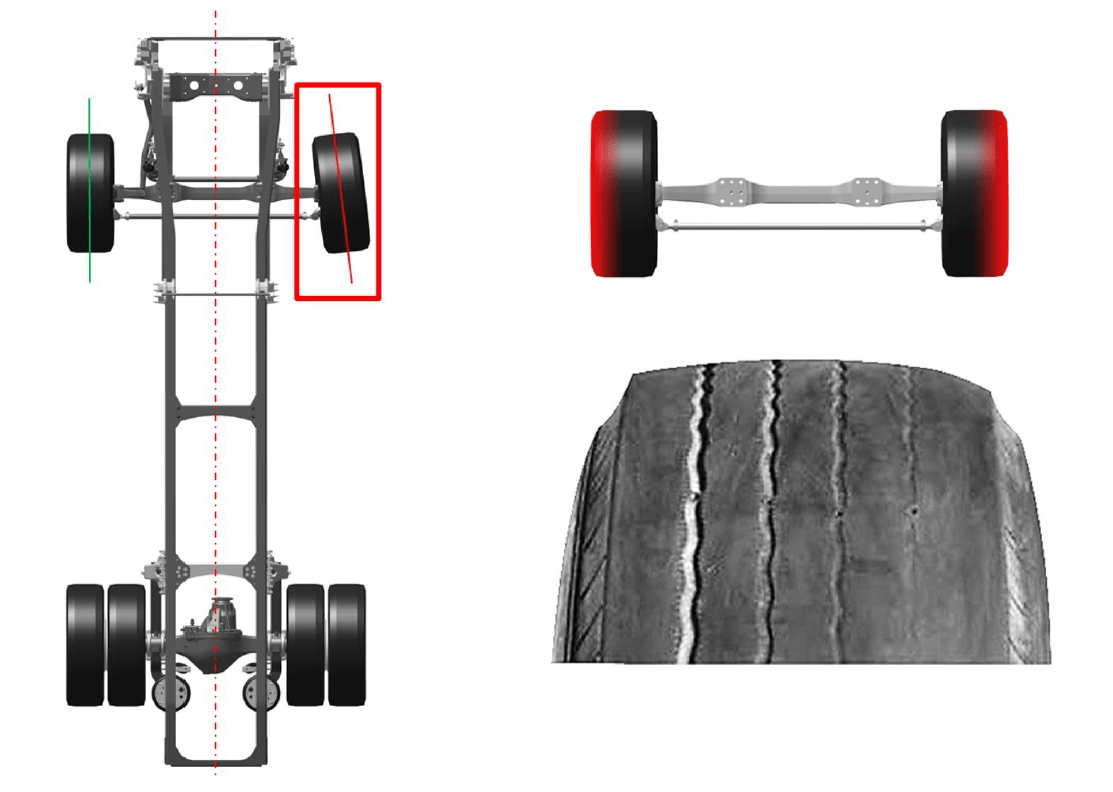TWO THIRDS OF TRUCKS AND TRAILERS ON UK ROADS ARE OUT OF ALIGNMENT
Below we discuss the cause and effect of misalignment and the benefits of correct alignment.
CAUSES OF MISALIGNMENT
Uneven tyre wear is often a sign of misalignment but what causes misalignment in the first place?
- Driving over something, a collision, curbing or driving on rough terrain
- Replacement of suspension parts or steering components
- Worn, damaged or bent suspension parts
- Wheels and tyres being worn or replaced incorrectly
- Added or reduced weight to the chassis/body
A perfectly aligned vehicle can leave the workshop and be thrown out of alignment instantly. This is why AES UK advise alignments are carried out on a more regular pro-active basis, at the very least at each MOT, service, tyre change and when replacing steering and suspension parts. Diagnosis can take as little as 15 minutes with Josam equipment which makes it relatively easy to bolt on to each service and MOT.
DANGERS OF MISALIGNMENT
We take the stance that safety is paramount when it comes to wheel alignment, a vehicle that is misaligned drastically reduces the safety of the vehicle both to the vehicle itself and also the driver/operator.
Dangers related to drivers/operators
- Driver fatigue is heightened due to ‘fighting’ the vehicle to keep it in a straight line
- Driver comfort is reduced which could lead to work related injury
- Handling becomes more difficult and turning circles maybe be affected
Dangers related to uneven tyre wear
- Handling becomes less stable especially at higher speeds
- Tyres are more susceptible to blowouts through uneven wear
- Braking distances become longer – a tyres contact with the surface is less effective
Dangers related to truck
- Misalignment can put undue stress on a vehicle’s suspension, posing a risk of damaging suspension components which could result in expensive vehicle repairs
- Increased environmental impact through increased fuel consumption
Reading tyre wear
Did you know most tyre wear is caused by incorrect toe settings? We highlight some of the common wear patterns below.
INCORRECT TOE SETTINGS
Can cause feathered edges on a tyre including feathering on the inner and outer edges or diagonal wear. It’s important to know if the history of the tyres for example if they have been rotated or swapped to/from a different axle. Excessive toe-in could lead to outside edge feathering, excessive toe-out could lead to inside edge feathering.
INCORRECT CAMBER SETTINGS
If the camber differs from left to right by more than 0.5°, the vehicle will pull to the side with the more positive camber. Incorrect camber often results in smooth shoulder wear or sloped wear, wear from positive camber is on the outside shoulder of the tyre. Wear from negative camber is on the inside shoulder.
OUT OF SQUARE & PARALLELISM
Tyre wear on front tyres can be caused by out of square rear axles. Out of square occurs when the thrust line of reference axle not aligned with centreline. Unevenly distributed toe on rear axle can also cause out of square and tyre wear. Reference axle thrust line is the most important factor in wheel alignment, because it has major influence on vehicle behaviour and wear on front tyres. Depending on resulting thrust angle for all rear axles combined, crabbing can occur.
Effects of misalignment
- Increased fuel consumption – a small misalignment can increase fuel consumption by up to 5%
- Increased tyre wear – a small misalignment can reduce tyre life by 50%
- Increased mechanical wear
- Reduced up-time – due to increased risk for unplanned stops
- Poor driving comfort and drive-ability – which could lead to accidents and work-related injuries
- Decreased safety – due to poor drive-ability and large required space on the road. Uneven tyre wear can also decrease safety
- Increased environmental impact through increased fuel consumption
A fleet operator’s profitability is paramount, imagine if you could save 3% on your fuel costs? Based on a fleet size of 30, and an average of 80,000 miles per/year/vehicle annual fuel costs savings could be in the region of £70,000 per year.
Key takeaways
- Vehicles can be thrown out-of-line easily
- Misalignment can reduce safety on the road
- Misalignment increases fuel consumption and reduces tyre life
- The majority of tyre wear on the front tyres is caused by the rear axles
- Alignments should be carried pro-actively not re-actively






